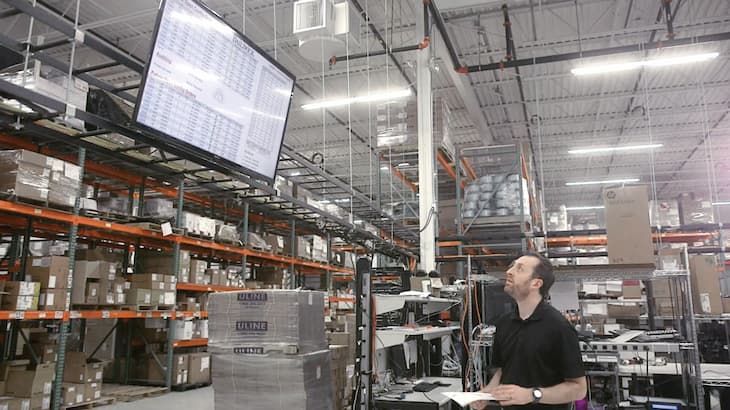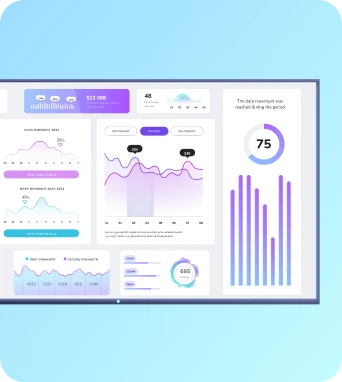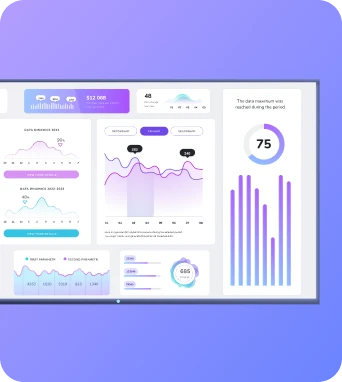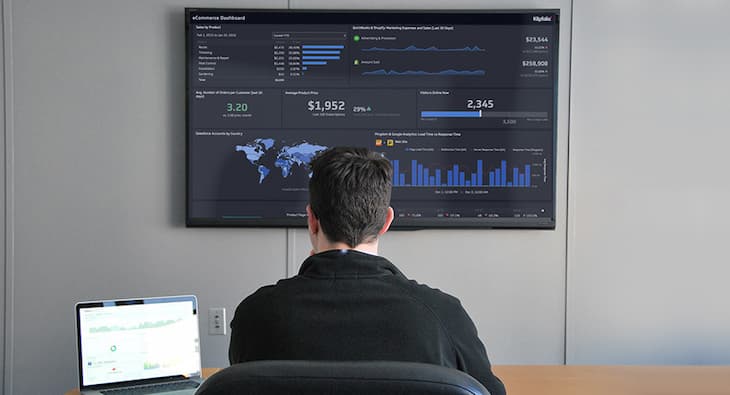They say knowledge is power — so how do you get everyone in the know?
Businesses are complicated things. There’s a lot of data to dig through, visualize, analyze, and finally understand before you can get a really clear picture of how you’re performing. And that’s all before even starting to make effective and business-critical decisions!
But it’s not really enough to be printing out spreadsheets and collating information manually at the end of the month, or the end of the quarter; to keep up with other enterprises and to ensure you’re not missing any tricks, you need real-time updates. You need to be able to predict what’s coming up next and react ahead of time to keep up with the Joneses in the age of Big Data, and that’s exactly what business intelligence solutions like Tableau allow you to do.
I’m sure you already know all of this, though. I’m sure you’ve taken your time to set things up on Tableau and you’ve got your dashboards already recording and hooked up with your data sources. But what’s next? Are you maximizing their potential, and getting the best ROI possible from your Tableau dashboards?
Obstacles to Success
Getting your dashboards up and running is one thing, but are you finding it hard to get your teams, decision-makers, and employees to actually look at them? Do you have a dashboard running that nobody is checking in to monitor? Do you struggle to use your dashboards effectively in meetings, because everybody has to open them separately on their screens? A dashboard can only really be helpful when it’s collaborative and democratized; when everybody can access it easily.
But even that comes with its own pitfalls! What about data security? You don’t want anything getting hacked, or viewed without permission. It can all be such a headache!
If any of this sounds familiar to you:
- Only a few people have login access to your dashboard
- Even fewer people have actually ever logged in
- Additional users are too expensive to add
- Sharing dashboards feels too much like a security risk
- When dashboards are shared, your employees don’t check in on them
Then you’re in the right place. These are some of the most common issues that businesses and organizations face when trying to make the most of their business intelligence tools, and it can be hard to think of a way that they can be avoided. But we’ll get to all that in just a moment (very mysterious!).
Let’s go over the ways that Tableau allows you to share the dashboards you create on it:
- If you have access to Tableau Public or Tableau Server, you can share your dashboards via those - you’ll find instructions from Tableau on how to do that here.
- You’re able to export your dashboard in a couple of different formats, allowing you to email them or share them that way instead. You can export your Tableau dashboard as a PDF, a PowerPoint, an Excel file, or a CSV file.
- You can share your dashboard by emailing the URL (which you can find from the “Share” button on the toolbar) to your team members. The “Share” button will also allow you to embed your Tableau dashboard in a website.
Sounds good, right? Well, there are issues with all three of these solutions. For one, using Tableau Server requires additional setup - and using Tableau Public exposes your confidential and sensitive business intelligence data to anybody on the internet who finds the URL! Not ideal.
Exporting as PDFs or other file types means your employees are going to be reviewing static, out-of-date dashboards that don’t reflect what the data actually looks like at that moment. This is a big problem if you’re having meetings about the data once every few weeks, allowing those exported dashboards to be even further out of date than they would be otherwise.
Sharing the URL via email is all very well and good, but are you sure your team will even open those emails? According to Slicktext in 2019, as many as 60% of employees admit to ignoring internal emails at work (with almost 48% of them feeling overwhelmed by the number of emails they receive daily). That’s nearly 1 in 2 employees who feel like they’re receiving too many internal emails!
So how can you effectively communicate with your employees without overwhelming or bugging them?
Hidden in Plain Sight: TV Dashboards
So, quick recap: Publicly available URLs are a security risk. Your team doesn’t want endless internal emails. You need up-to-date, live data. What platform can solve all of these issues?
Your workplace TV screens might be the answer!
TV is a technology that we’re all familiar with, and you probably already have one or two in your workplace as it is. Maybe they’re hidden away in the break room, or perhaps you have one in your actual office room. Either way, what’re they doing right now? Most likely, they’re muted and being ignored. You could be utilizing these to effectively communicate to your team in a non-intrusive manner!
TV screens can be really powerful tools for communication, and can (perhaps surprisingly) help you to share your Tableau dashboard. They give you the opportunity to continuously touch base with your colleagues and team members, keeping them informed of crucial pieces of information by looping messages rather than just sending that message out once and then never again. This kind of “constant uptake” can keep messages and pieces of information fresh in your team’s minds.
The hardware can be very affordable! Because it’s TV screens and not some proprietary hardware that’s kept behind an expensive barrier-to-entry, you can pick up enough to place them wherever you need to. TV screens are versatile and can come in multiple sizes and resolutions, and be mounted to virtually any wall in any room in any of your locations. Super handy!
This can be particularly helpful for workers who are deskless (who, in 2022, Quinyx found 90% of businesses rely on) because you can simply mount a TV screen on the wall in the area that those workers are in, and voila! — you’ve immediately set up a clear, instant, and engaging channel of communication.

TV screens offer an easy, straightforward to share your dashboards with your whole team.
However, just having a screen on its own isn’t going to be enough to really make the most of its potential! I’m sure you’re not totally alien to the pretty clunky experience of herding team members into a meeting room, then hooking up somebody's laptop to the screen in there, fiddling with it until it looks right, logging into your dashboard, full-screening it so that everybody can see it, hiding your notifications so nobody takes a peek at your Slack messages… it’s a messy experience every single time. And it really is every single time, because once that meeting’s over, you’ve got to disconnect, and then go through the process again next time!
Fugo and Your Screens - A Match Made in Heaven
The solution to all of this is a smart, scalable, effective, and user-friendly content management system that pairs with your TV screens — which is where Fugo comes in.
With Fugo, you can manage all of your TV screens from one place. You can split your workplace screens into multiple groups, and when it comes to sharing Tableau dashboards, it’s a breeze. You can share them securely and quickly without having to purchase access for another user, without risking your access credentials by storing them on third-party devices, and without letting just anybody on the internet peek at your data by creating publicly accessible URLs.
Fugo can also help your screens be more reliable by not displaying your dashboards directly, which could overload and crash your players. Instead, Fugo displays dashboard snapshots, which are created and deleted every few seconds to keep your data live but also secure - and check out how easy it is to set up:
- Download Fugo onto your device, and add it to your Fugo account.
- Install our Chrome extension, which allows us to record the steps to capture those snapshots.
- Walk through the process of logging into and viewing your dashboard.
See how it works below
That’s it. Three steps! After this, Fugo goes and gets a new snapshot every few seconds to keep your dashboard data fresh, storing it in a secure Cloud server, and sending it to your screens to display. It couldn’t be easier!
Managing your TV screens through Fugo can offer benefits above and beyond sharing your tableau dashboards and keeping your employees in the loop, though. With the Design Studio, you can build complex screen layouts and playlists that contain different types of media and messages:
- You can keep your colleagues and employees in the loop with company, industry, global, financial, or sports news.
- You can display the weather or the time.
- You can celebrate your workforce by introducing new team members, displaying birthdays, praising good performances (think Employee of the Month style), offer up social channels, or display polls — this last one is particularly handy for deciding where to go for an after-work drink on a Friday afternoon!
- You can inform your team members of upcoming events, or keep them informed with best practices, new products, and compliance.
- You can help out your customers or new team members by displaying workplace maps, menus, or help with hot-desk booking.
Getting Started with TV Dashboards
When it comes to sharing your Tableau dashboards via your workplace TV screens or digital signage, Fugo TV Dashboards is the way to go. Affordable, secure, user-friendly, and massively scalable, it’s one of the most powerful digital signage solutions on the market.
If you’d like to go ahead and get stuck in, you can create a Fugo account here, create a dashboard and try it out with your signage during your free trial!
However, if you’d like to chat with our team and get a better understanding of how Fugo might work with your organization, feel free to book a demo by clicking here!





